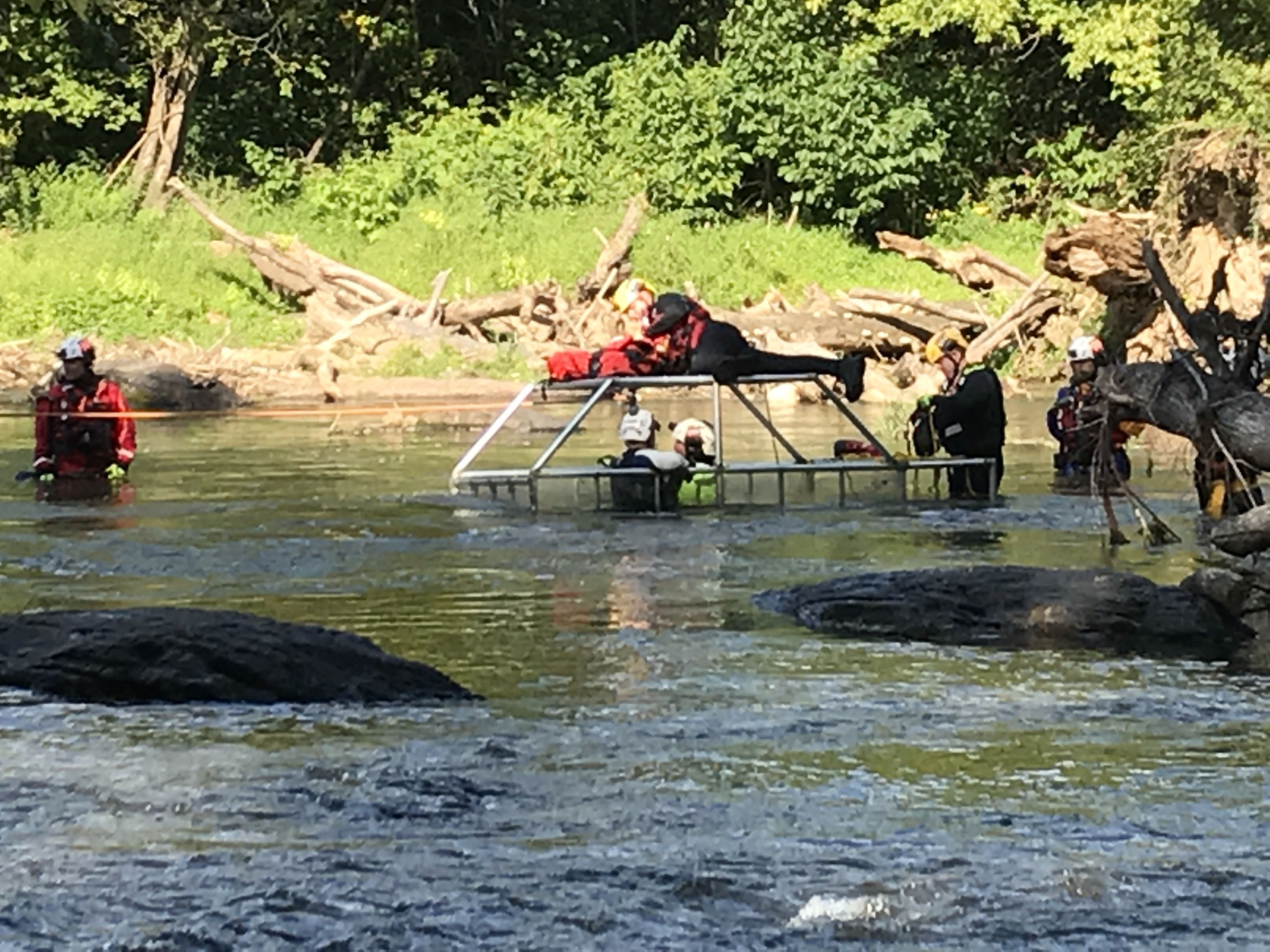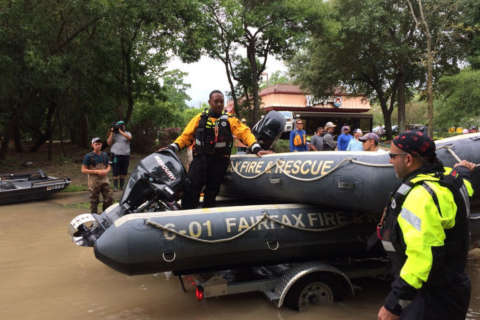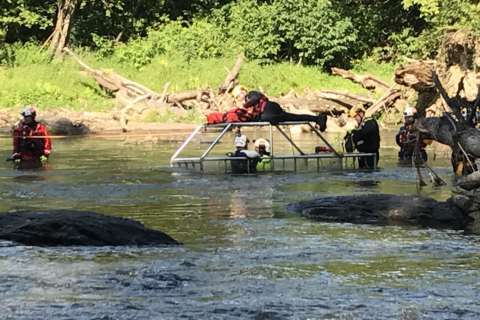
GREAT FALLS, Va. — Water rescue teams from across the nation rushed in to help after Hurricane Harvey, and more are sure to be activated after Hurricane Irma comes ashore.
It just so happens that the Loudoun County swift water rescue team has been busy training this week in the Potomac River.
Carrying equipment and clad in wet suits and personal-flotation devices, members gathered for a briefing Friday before heading into the water at Seneca Regional Park in Great Falls.
What looked like the frame of a car had been placed in rushing water about waist-high.
“It’s actually based off the specs of a Honda Accord,” said Roger Martin, special operations battalion chief with Loudoun County fire and rescue.
During WTOP’s visit to the training site, members practiced rescuing people from the simulated car using ropes.
“We don’t see swift water calls all the time. However, 90 percent of our calls that we do run … usually [involve] a vehicle that’s stuck in a flooded-out roadway,” Martin said. “We always preach this, you know — if the road’s flooded out, turn around, don’t drown.”
The team has five boats placed around the county. It just recently acquired 11 headsets with microphones that make it easier to communicate.
The team has a motto that Martin said sums up what they will consider doing during any rescue scenario: reach, throw, row and go.
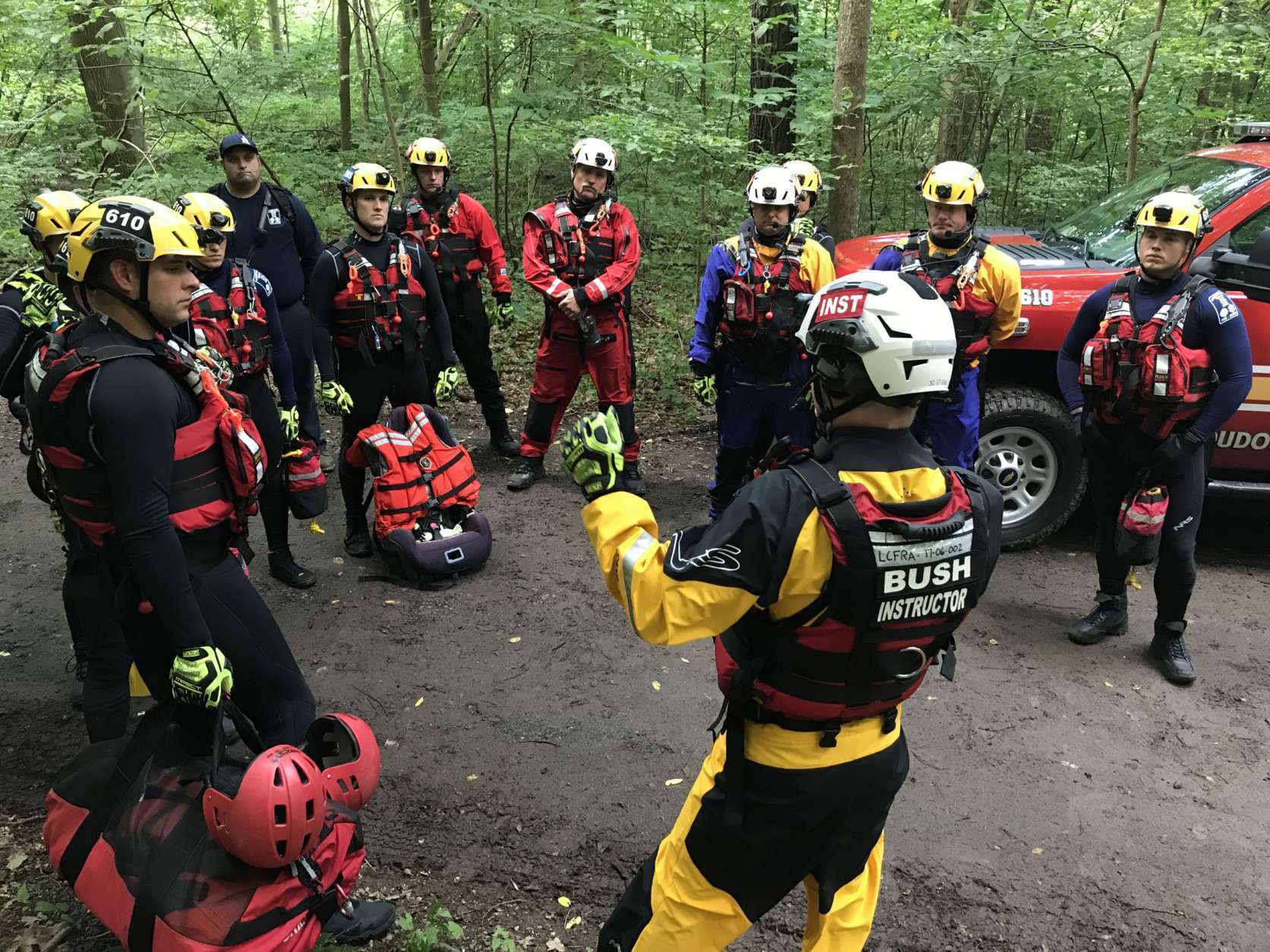
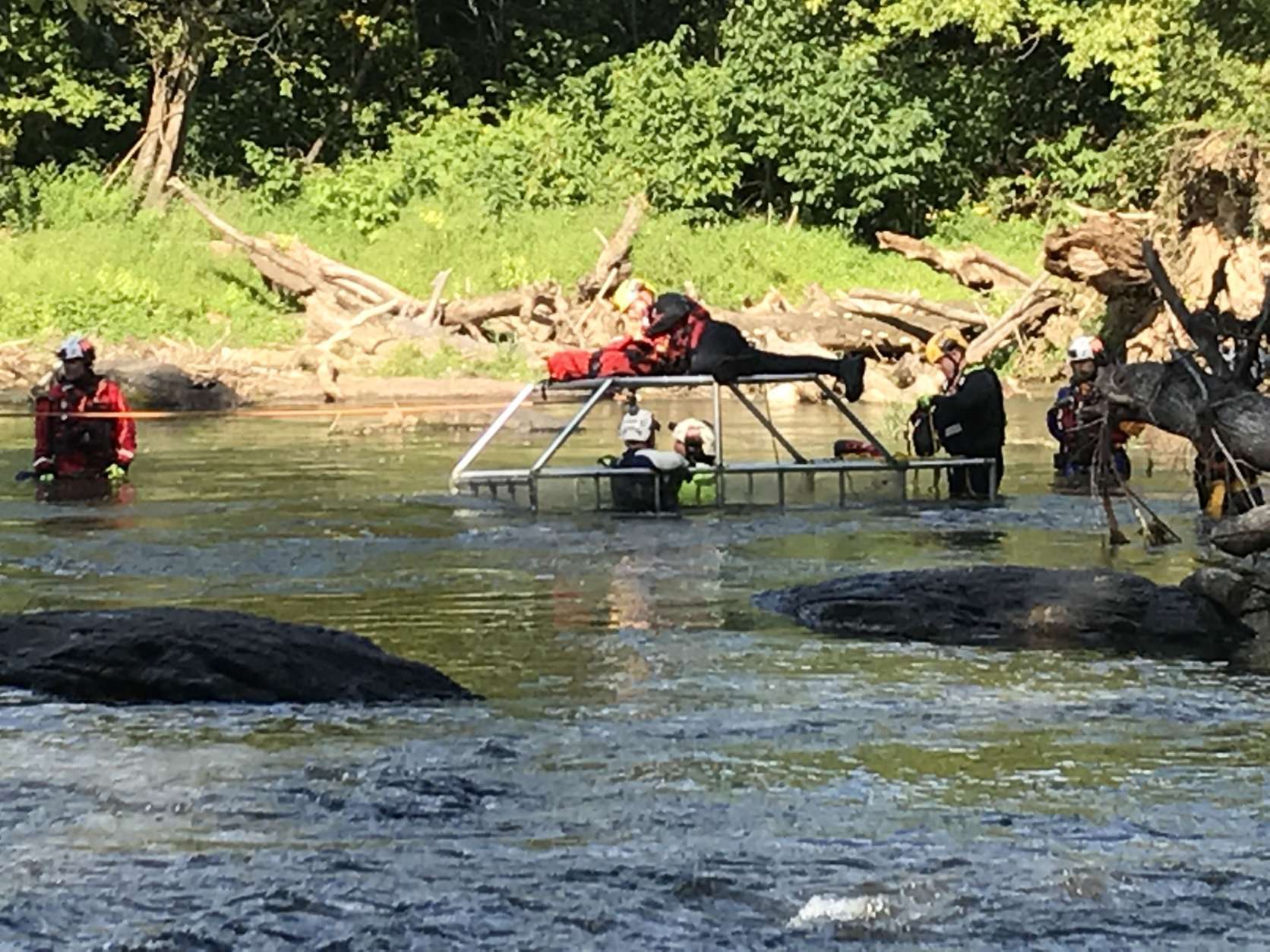
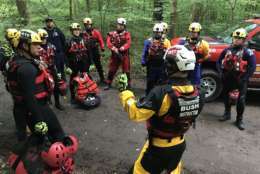
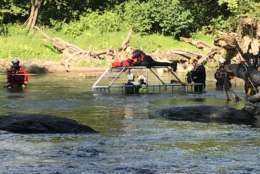
First, they try reaching a person with something, usually a ladder truck.
If that doesn’t work, they try throwing something to them, such as a rope.
Option three is to get the person in a boat, and if that fails, rescue swimmers go out to reach the person.
Sometimes, Martin said, they have to resort to a fifth rescue method: a helicopter.
Martin estimates that a total of 60–70 people in the county — including members of volunteer fire departments — have trained to be part of the swift water rescue team and that just getting into the class is challenging.
To do so, you have to pass a test that involves swimming 300 meters in 12 minutes and then treading water for 10 minutes afterward.

